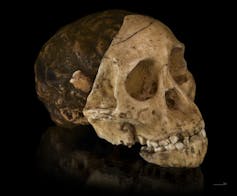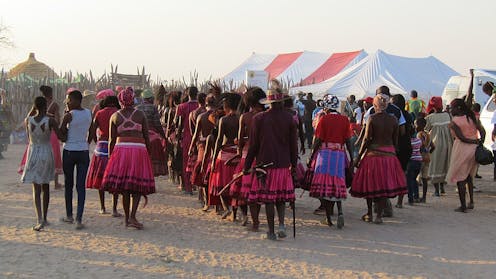Source: The Conversation – Africa (2) – By Claudia Christowitz, Postdoctoral Research Fellow, Stellenbosch University
Cancer treatment is becoming more personalised. By considering a patient’s unique genetic and molecular profile, along with their lifestyle and environmental factors, doctors can make more accurate treatment decisions. This approach, known as personalised or precision medicine, has been increasingly used in South Africa and has expanded to other African countries in recent decades. It requires doctors to rely more on genetic tests to guide decisions. But these tests don’t always give clear answers. Functional genomics may offer a way to improve the interpretation of unclear genetic test results. We spoke to physiological scientist Claudia Christowitz about it.
Is cancer a genetic disease and what is personalised medicine?
Cancer is fundamentally a genetic disease. It arises when changes in a person’s DNA (referred to as variants or mutations) disrupt normal cell functions such as cell growth and division. It eventually leads to tumour formation. These changes can be inherited from families or acquired during a person’s lifetime. This can be due to lifestyle and environmental risk factors such as smoking, ultraviolet radiation and infectious agents, among others.
Over the past few decades, we’ve entered the era of personalised medicine. As a result, the role of genetics in cancer treatment has become more prominent. Personalised medicine involves tailoring cancer treatment to each patient’s unique characteristics.
For example, even if two people are diagnosed with the same type and stage of cancer, their treatment outcomes may differ. This is because factors such as their genetic and molecular make-up, overall health status, age, body composition, lifestyle habits, and use of other medication can all influence how well a treatment works for them.
How have advances in genetic testing helped in treating cancer?
Advances in DNA sequencing technologies have made it possible to detect genetic variants more quickly and accurately. The tests can look for just a few genes linked to certain medical conditions, or they can describe the entire genome of an individual, or just the protein-coding regions of the genome (the exome).
DNA sequencing has revolutionised cancer care. Doctors can use it to improve prevention in people who are at risk of cancer, detect cancer early, and select the most appropriate treatment.
Africa’s first high-throughput Genomics Centre was launched in 2019 by the South African Medical Research Council. Cancer patients can now undergo whole exome sequencing and whole genome sequencing locally for around R10,000 (about US$566) to R20,000 (about US$1,132). This is sometimes covered by medical insurance. These services are also available at research facilities like the Centre for Proteomic and Genomic Research or the Centre for Epidemiological Research and Innovation at Stellenbosch University.
These facilities strengthen the capacity to sequence, analyse and store human genomes, particularly for the diverse gene pool in Africa. But routine genome sequencing, especially in the public health sector, remains limited due to high costs, limited awareness and the need for trained personnel.
What are the shortcomings of genetic testing?
Genetic testing doesn’t provide all the answers. Unfortunately, not all genetic results are clear-cut. In many cases, patients receive results showing changes in their DNA that cannot be confidently classified as either harmful (pathogenic variants or mutations) or harmless (benign variants). These unclassified variants are known as variants of uncertain significance. The uncertainty often leaves both patients and their oncologists (cancer doctors) unsure of the way forward.
With the advancement of sequencing technologies, rare or novel variants are more frequently detected. But without a clear understanding of whether the variant affects gene function, clinicians are often forced to wait – sometimes for years – until more information emerges.
When patients undergo genetic testing – often as part of a hereditary cancer screening or in response to early-onset or familial cancers – the hope is to find a variant that clearly explains their condition. But sequencing may yield variants of uncertain significance, raising questions about its usefulness in patient care and whether the tests are worth the cost.
What is functional genomics and how can it make genetic test results clearer?
Functional genomics is a growing field that could transform how we interpret these unresolved genetic results and make it possible to improve clinical care for cancer patients.
Functional genomics goes beyond simply reading the DNA code. It investigates how genetic variants behave in biological systems. By examining how a variant alters gene expression, protein function, cell behaviour, or response to treatments, scientists can determine whether it is likely to be benign or pathogenic.
This information is crucial for making timely medical decisions. Importantly, cells derived from patients can be used to mimic real biological conditions more accurately. By using cells carrying such a variant and comparing them to cells without the variant, scientists can determine whether the variant is influencing the response of cells to certain treatments or not.
In short: genetic testing is like reading the “instruction manual” of a cell. Functional genomics is like testing the effects of changes to these instructions.
My study, using patient-derived cells, investigated the effects of a rare TP53 variant that was identified for the first time in germline (inherited) DNA through whole exome sequencing in a South African family with multiple cancers. I found that this variant made cells resistant to the chemotherapy drug doxorubicin. Instead of undergoing cell death as expected, the cells went into a kind of “sleep mode” called senescence, where damaged cells stop dividing.
Although this prevents the growth of damaged cells, senescent cells can release signals that may inflame and harm nearby healthy cells. The variant also reduced how well immune cells can move, which may affect their ability to go to cancer cells and attack them. This study, supervised by Prof Anna-Mart Engelbrecht, Prof Maritha Kotze, and Dr Daniel Olivier from Stellenbosch University, highlighted how functional genomics can unravel the impact of a variant of uncertain significance, which may guide medical decisions.
In a world where personalised medicine is rapidly evolving, functional genomics represents a critical step forward, offering more clarity, better care, and renewed hope to those facing cancer.
![]()
Claudia Christowitz received funding from the National Research Foundation, South Africa.
– ref. Genetic tests for cancer can give uncertain results: new science is making the picture clearer to guide treatment – https://theconversation.com/genetic-tests-for-cancer-can-give-uncertain-results-new-science-is-making-the-picture-clearer-to-guide-treatment-262545



